How to cope with Trigonometry at A-Level Part 1: solving equations
In this blog (part of a mini-series) Mike helps students get over their fear of Trigonometry by covering the basics of the topic. This can help with tackling more advanced work further down the line.
Part 1: solving trig equations
Lesson: DON'T USE THE CAST METHOD!
This is usually covered at Core 2. Students can struggle as they attempt to reconcile the "CAST" diagram method (see below) with solving equations. My tip here? Ignore CAST completely, and just solve every trig equation EVER with a simple substitution and graph instead. I'll show you a simple method here... (NB- this is not a conclusive guide by any means. For a more detailed approach, I recommend the excellent Examsolutions, although be warned they do still use the CAST quadrant method at times...): (Make sure to re-arrange the equation into the form of sin(X), cos(X) or tan(X) first). So for example, if you are asked to solve the equation: 2 tan (2x + 5) = 3 for x between 0 and 270 your first move should be to use a substitution, then rearrange the equation completely. Here, we can use Y = 2x+5, then divide by 2 to give: tan (Y) = 1.5 From here, you can just solve the equation using a calculator, i.e. by pressing tan-1 (1.5) = 56.1 degrees. (If you get a different answer, you're in radians mode). You'll hopefully notice that the calculator only gives you one solution, whereas we want ALL the solutions in the given range. How can we find these? First, draw a graph of tan, giving plenty of extra space over the given domain of 0 to 360 degrees (this is important- our solution actually won't go over but good practice says you should.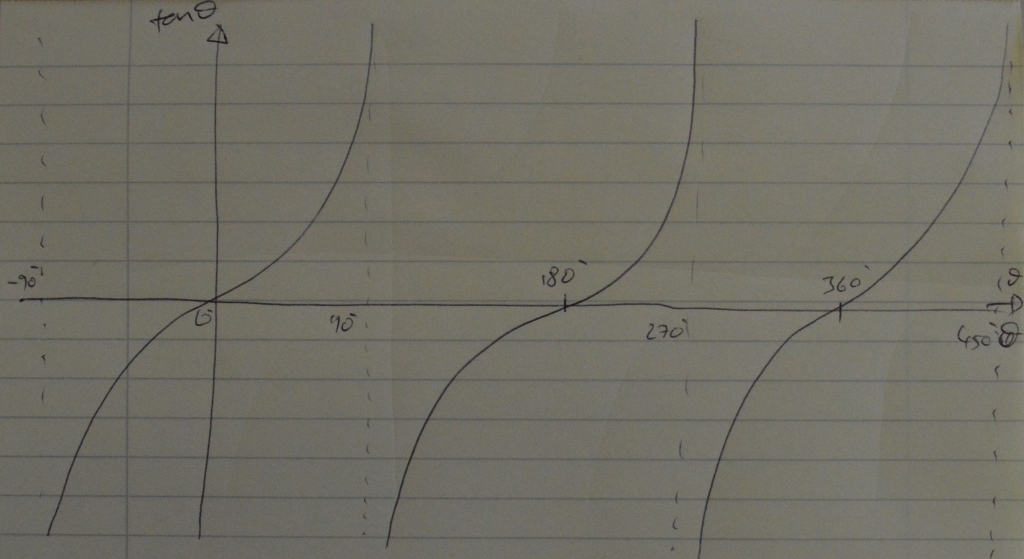 Now, on this graph just label the first solution for tan (Y) = 1.5. You'll notice that the shape of the graph meets 1.5 on the y-axis and 56.1 on the x-axis, telling us this is a reasonable solution. (This is another benefit of this method over the CAST method).
Now, on this graph just label the first solution for tan (Y) = 1.5. You'll notice that the shape of the graph meets 1.5 on the y-axis and 56.1 on the x-axis, telling us this is a reasonable solution. (This is another benefit of this method over the CAST method).
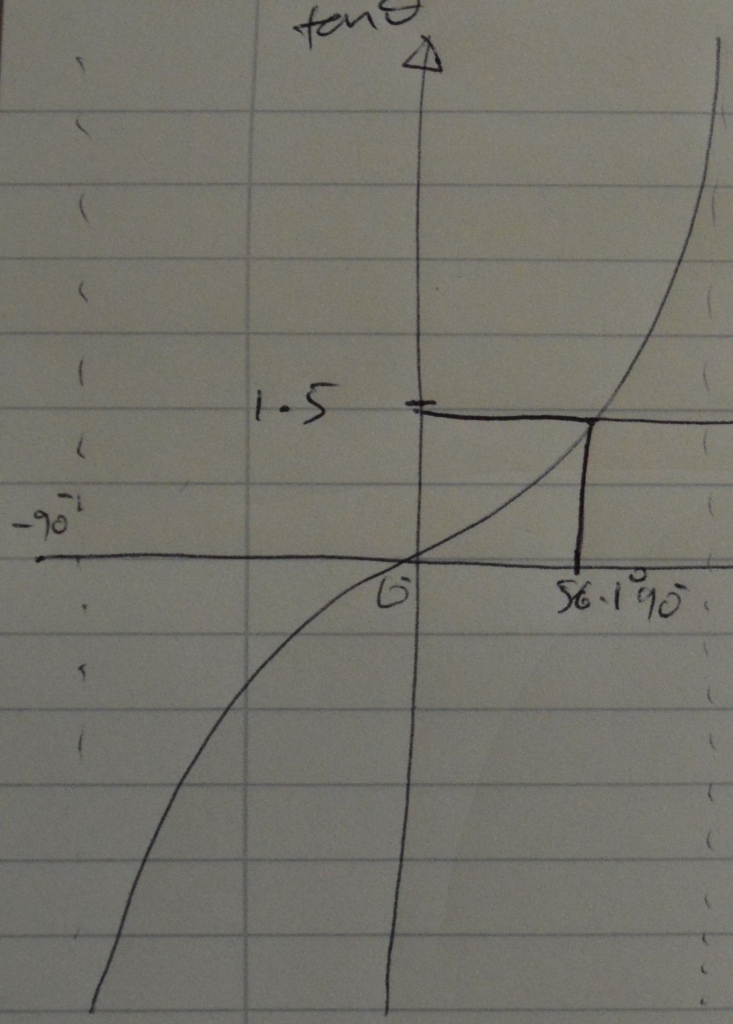 Now for the clever bit! On our graph, we're going to show ALL the solutions of tan (Y) = 1.5. (This is simply every point where the Y ordinate is 1.5). Unlike the calculator, the graph shows us EVERY possible solution, so long as we've drawn it big enough. We simply find these extra points by adding 56.1 on to the angle where the graph crosses the x-axis. E.g., the next solution after 56.1 comes from adding 56.1 to 180 (where tan cuts the x-axis again), giving us our next solution of Y = 236.1. If you want to check this, simply tap in tan(236.1) into your calculator.
Now for the clever bit! On our graph, we're going to show ALL the solutions of tan (Y) = 1.5. (This is simply every point where the Y ordinate is 1.5). Unlike the calculator, the graph shows us EVERY possible solution, so long as we've drawn it big enough. We simply find these extra points by adding 56.1 on to the angle where the graph crosses the x-axis. E.g., the next solution after 56.1 comes from adding 56.1 to 180 (where tan cuts the x-axis again), giving us our next solution of Y = 236.1. If you want to check this, simply tap in tan(236.1) into your calculator.
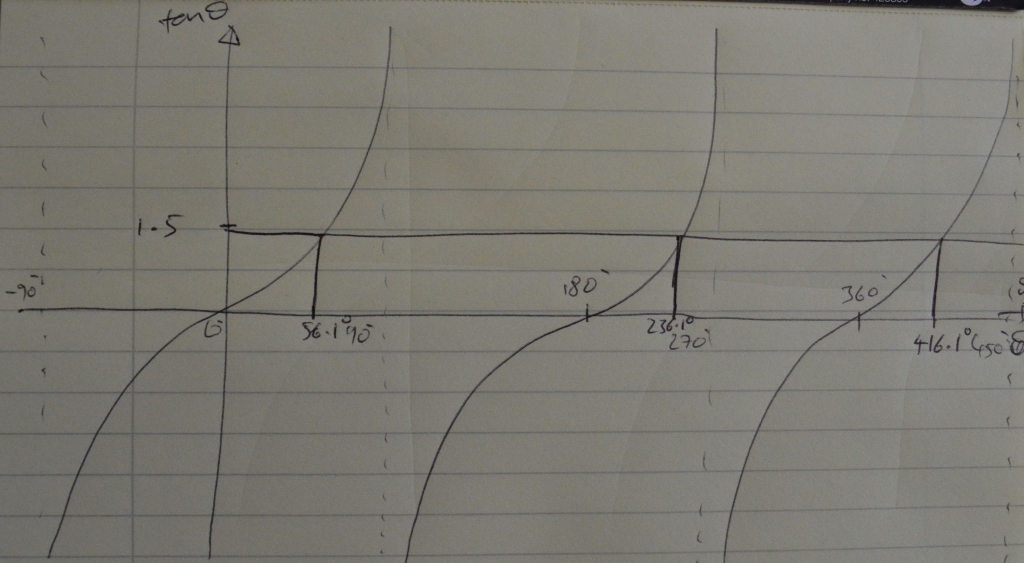 All we have to do now is solve our initial equation for each one of these points...
Y = 56.1, 236.1 and 416.1. (You'll notice that some of these are outside our original range. This is deliberate- we're giving ourselves some room to play with. So long as we cut the solutions out of the final answer we're O.K.)
meaning that
2x + 5 = 56.1, 236.1 and 416.1
Solve this equation for each solution...
Giving solutions of
x = 25.6, 115.6 and 205.6, for the range x = 0 to 270.
As mentioned, its probably worth checking each of these using a calculator. By typing in tan (2 x 205.5... + 5), we get 1.5. This means our solution is correct.
All we have to do now is solve our initial equation for each one of these points...
Y = 56.1, 236.1 and 416.1. (You'll notice that some of these are outside our original range. This is deliberate- we're giving ourselves some room to play with. So long as we cut the solutions out of the final answer we're O.K.)
meaning that
2x + 5 = 56.1, 236.1 and 416.1
Solve this equation for each solution...
Giving solutions of
x = 25.6, 115.6 and 205.6, for the range x = 0 to 270.
As mentioned, its probably worth checking each of these using a calculator. By typing in tan (2 x 205.5... + 5), we get 1.5. This means our solution is correct.
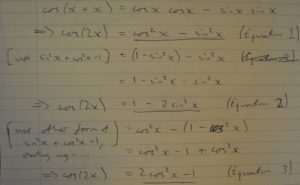

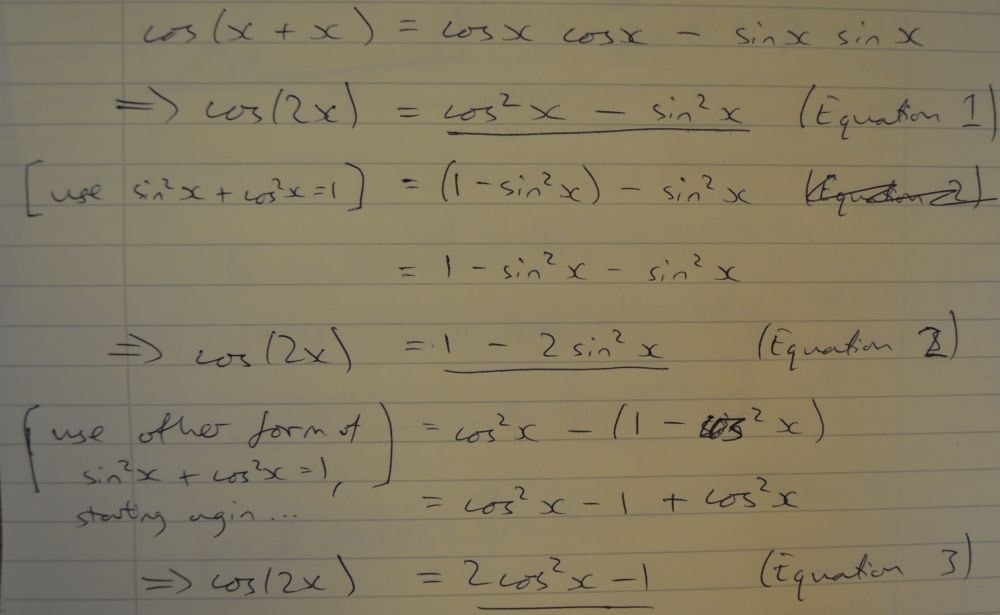
Start the discussion!